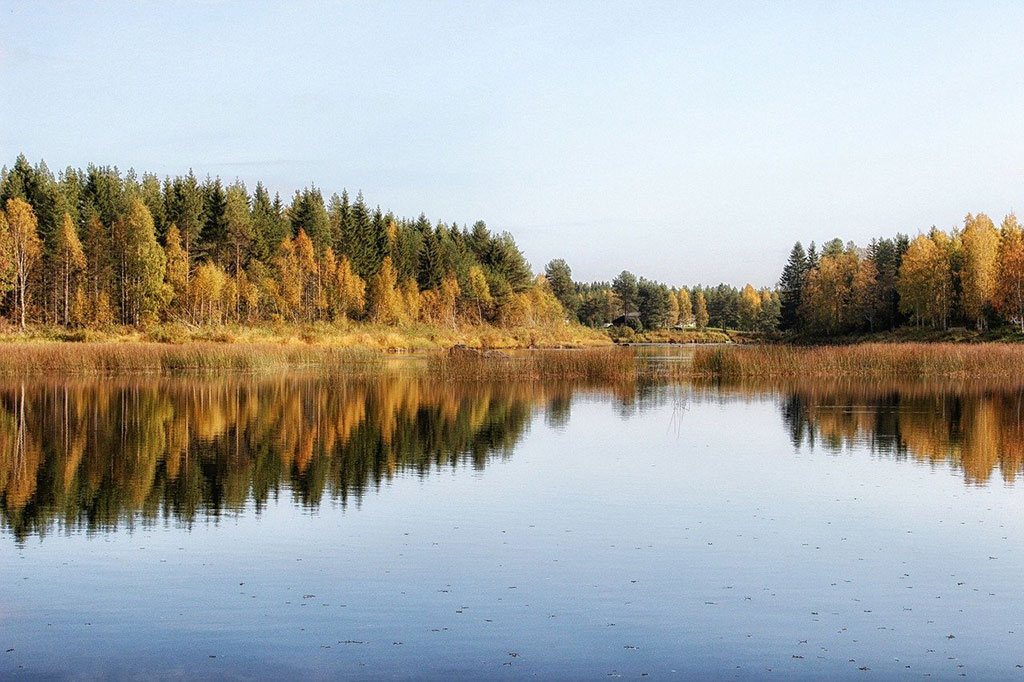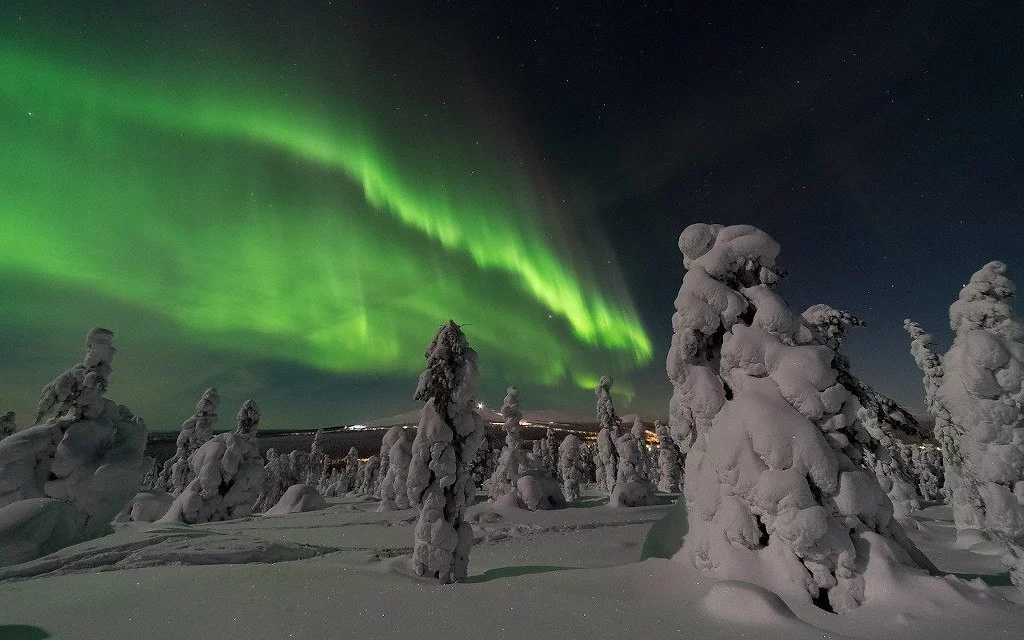Finland, known as the land of a thousand lakes and endless forests, offers one of nature’s most spectacular shows: the Northern Lights or Aurora Borealis, a phenomenon that cannot be enjoyed on most of the planet since certain climatic conditions and a specific geographical location is needed for this event to take place.
While this stunning phenomenon can be elusive and unpredictable, timing your visit to maximize your chances of seeing the Northern Lights is key. In this blog post, we’ll explore the best times to capture the Aurora’s magic in Finland’s night sky, ensuring that your journey to this winter wonderland is nothing short of magical.
The quest for the Northern Lights is as much about timing as it is about location. Situated well above the Arctic Circle, Finnish Lapland provides some of the most accessible and comfortable viewing opportunities in the world. Still, nature has its schedule, and there’s a prime season for aurora hunting that coincides with the long, clear nights of the Arctic winter. As we delve into the details, we’ll discuss the nuances of solar activity, the importance of darkness, and the impact of weather patterns, all of which play a pivotal role in the Northern Lights display.
Contenidos
Tips for seeing the Northern Lights
First of all, it should be noted that it is quite difficult to predict the activity of the Northern Lights. The most reliable predictions are those made in a time span of 2 hours or even less. Furthermore, any prognosis greater than 24 hours should be rejected or, at the very least, considered highly doubtful.
There are a few guidelines or tips to increase the chances of encountering northern lights in Finland:
- Check the forecast: Before heading out to see the northern lights, check the forecast to see how likely they are to occur. There are several websites and apps that provide this information, such as the Aurora Service website.
- Dress warmly: It can get very cold in Finland, especially at night, so dress warmly with several layers of clothing, a hat, gloves and warm boots. You can read our article on how to dress in winter in Finland to find out what to wear.
- Choose a dark place: To get the best view of the Northern Lights, you should be away from any source of light pollution. Look for a dark place, such as a national park or wilderness area, where you can see the night sky clearly.
- Take a camera: You will definitely want to take pictures of the Aurora Borealis, so take a camera and a tripod. Make sure you know how to set your camera for night photography, for example, using a long exposure.
- Be patient: Seeing the Northern Lights is never guaranteed, so be prepared to spend several hours outdoors waiting for them to appear. Bring snacks, water and something to entertain you while you wait.
- Consider taking a guided tour: If you are unfamiliar with the area or want expert advice on the best places to see the northern lights, consider booking a guided tour.
If you follow these tips, you will increase your chances of seeing northern lights in Finland and have a memorable experience.
What is the best time of the year to see the Northern Lights?
The Northern Lights can be found from mid-August to early April. The best times to watch them take place at the beginning and end of the season. However, each time of year has its own character that is worth keeping in mind when planning a trip to see the Northern Lights.
Aurora Borealis in September and October
According to different studies, in autumn we find the most geomagnetically disturbed days, which translates into an increase in the activity of the aurora borealis. Therefore, the probability of seeing it is greater if we travel at this time of year.
In September and October, the ruska season takes place throughout the country, that is, autumn colours are installed in the trees and landscapes, which allows you to enjoy impressive pictures. In addition, the nights are darker, as the days are getting shorter and the snow has not yet arrived in many places, something that can favour the visibility of the Northern Lights.

As for the temperature, the extreme cold has not yet appeared, so it will be much more comfortable to look for auroras by not having to face low temperatures or snow that makes the search difficult. You can even plan a night walk or spend the night outside. Besides, the lakes are not frozen either and, therefore, it is possible to take pictures with the reflection of the lights in the water.
Search in November, December and January
The major snowfalls begin in November, opening up the possibility of snowshoeing to find the Northern Lights. Also, the longest nights of the year take place in December and, therefore, we have more darkness, which increases the probability of seeing the phenomenon.
Among the negative aspects of making the trip on these dates is the price of accommodation, especially in December and the Christmas season, which will be higher compared to other times of the year. In addition, weather conditions also make it difficult to carry out the activity. There is a large number of snowfalls, so clouds and snow will reduce the chances of seeing the Northern Lights. Low temperatures can also be a nuisance.
The phenomenon in February and March

Temperatures are still shallow, but most of the snow has already fallen, and there will be fewer clouds in the sky. The nights are shorter, although they are still long and dark enough to be able to enjoy the Northern Lights. Furthermore, the geomagnetic activity also increases in March and therefore the probability of encountering auroras. Finally, there are many complimentary winter activities, such as a snowmobile safari, that you can do during your trip.
Northern Lights during the rest of the year
The chances of finding the Northern Lights between April and August is very low. The days lengthen and, in certain areas, the time of midnight sun arrives, which means that the days have 24 hours of daylight and, therefore, the phenomenon will not occur at any time.
In short, the months of September, October, February and March are the best to see the northern lights, both because of the probability of seeing the phenomenon and because of other aspects, such as the weather, that we will find during the trip. Besides, it is necessary to have maximum darkness, so the best time of day to see them will be between 22:00 and 02:00 at night.
Finally, we want to remind you that, during your trip to Finland, you can go on a Northern Lights safari, in which a local guide will help you find the best places to observe them.
Would you like to visit Finland to see the Northern Lights? Tell us in the comments and, if the article has helped you, we encourage you to share it on social networks using the icons that you will find just below.
